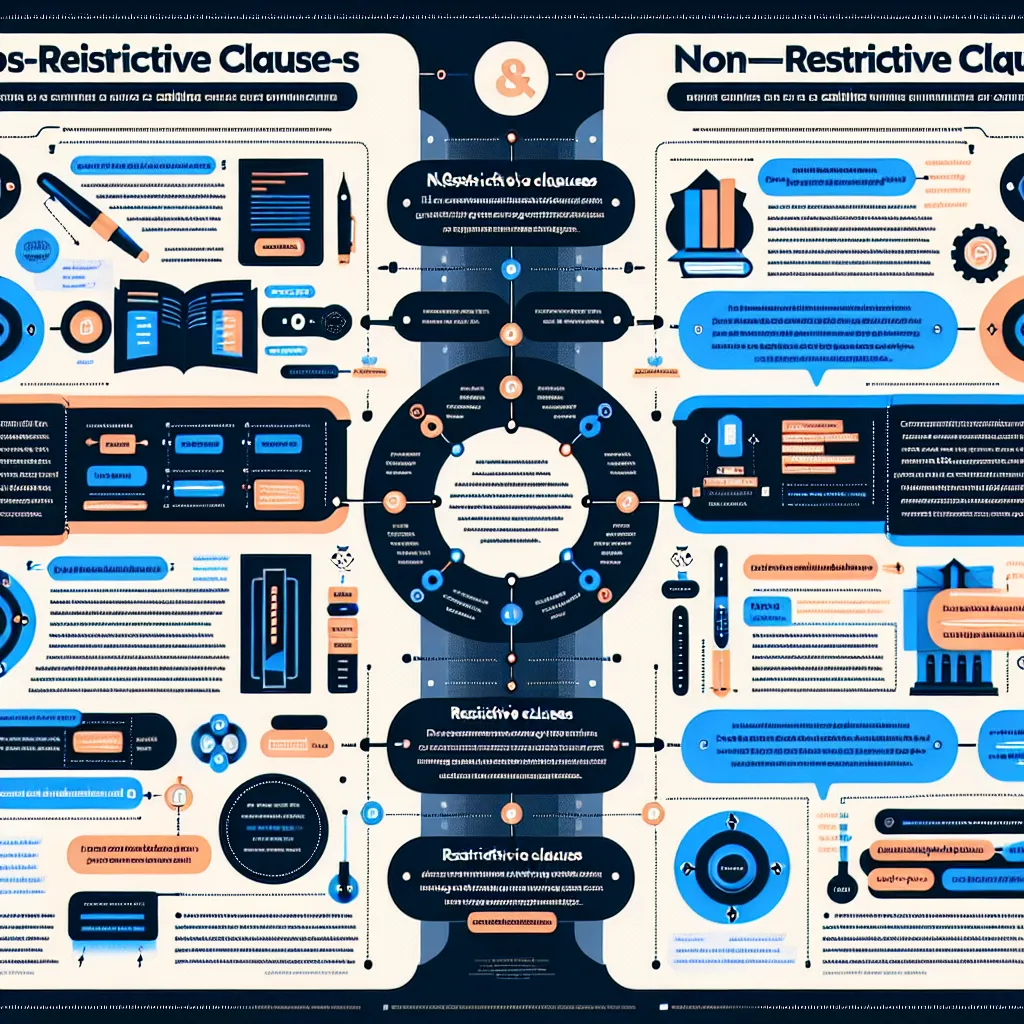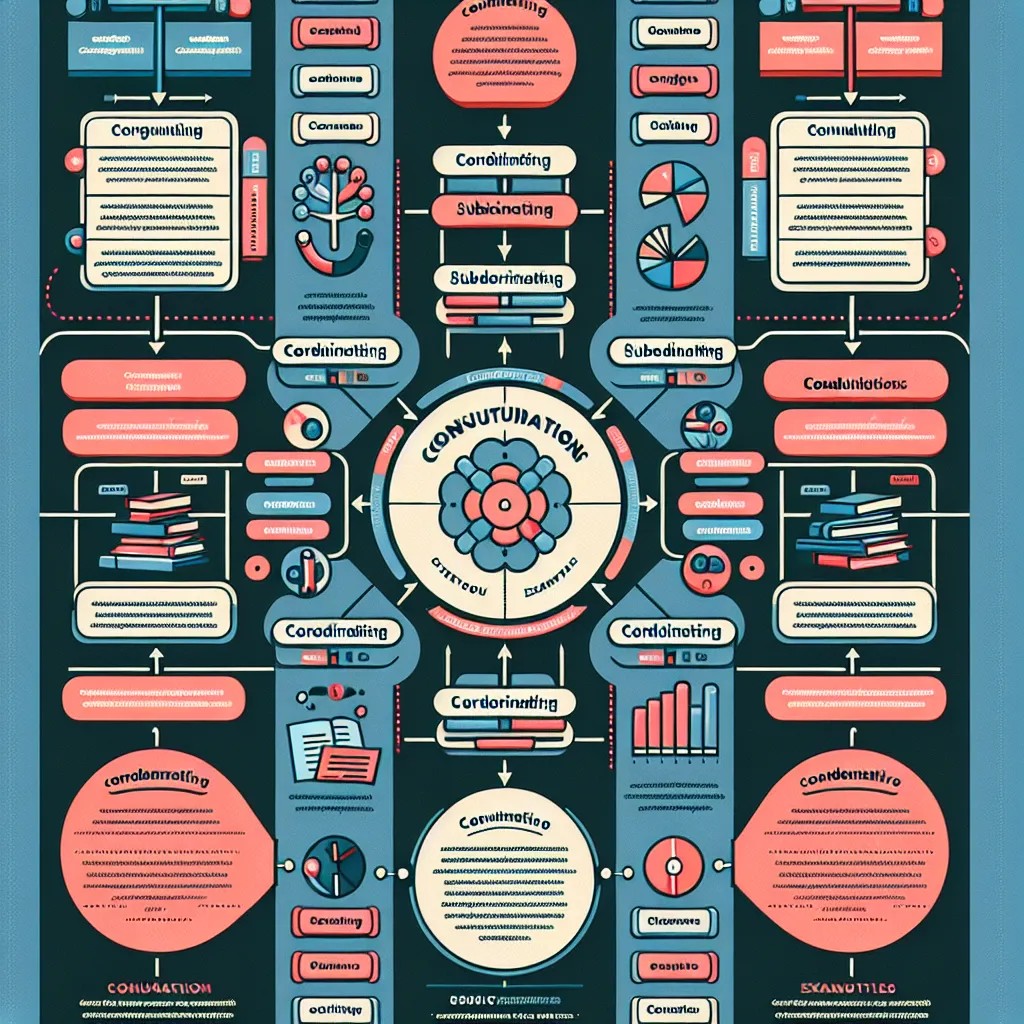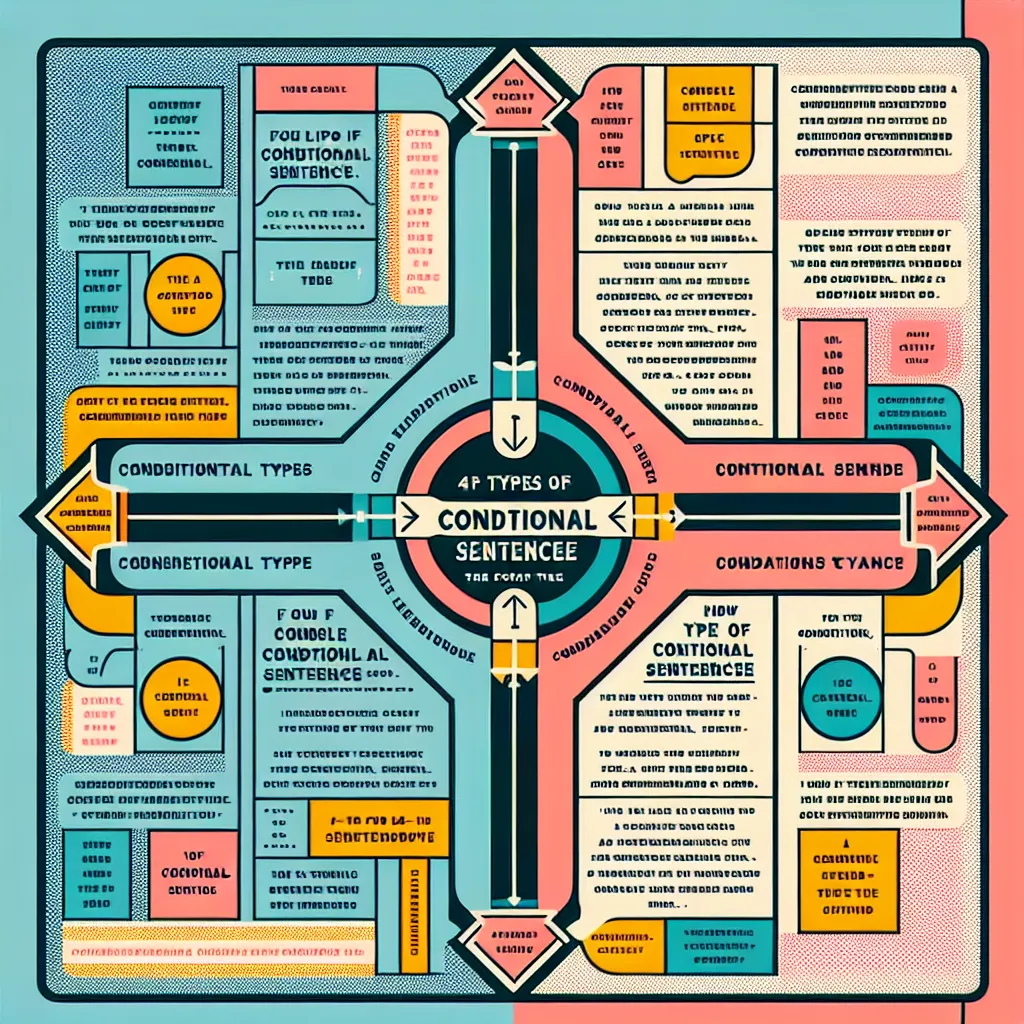Are you struggling with restrictive and non-restrictive clauses? Don’t worry; you’re not alone. Many English learners find these concepts challenging, but with the right approach, you can master them and take your grammar skills to the next level. In this comprehensive guide, we’ll break down everything you need to know about restrictive and non-restrictive clauses, providing clear explanations, examples, and practical tips to help you use them correctly in your writing and speaking.
Understanding Restrictive and Non-Restrictive Clauses
What Are Restrictive and Non-Restrictive Clauses?
Restrictive and non-restrictive clauses are types of relative clauses that provide additional information about a noun in a sentence. The key difference lies in how essential the information is to the sentence’s meaning.
-
Restrictive Clauses: These clauses provide essential information that is necessary to understand the meaning of the sentence. They are not set off by commas.
-
Non-Restrictive Clauses: These clauses provide extra, non-essential information that can be removed without changing the sentence’s core meaning. They are always set off by commas.
 Restrictive and Non-Restrictive Clauses Comparison
Restrictive and Non-Restrictive Clauses Comparison
Why Are They Important?
Understanding the difference between restrictive and non-restrictive clauses is crucial for several reasons:
- Clarity: Using these clauses correctly helps convey your message more clearly and precisely.
- Punctuation: Proper use of commas with non-restrictive clauses is essential for correct grammar.
- Meaning: The choice between restrictive and non-restrictive clauses can significantly impact the meaning of your sentence.
- Advanced Writing: Mastering these clauses will elevate your writing style and make your English sound more natural and sophisticated.
How to Identify and Use Restrictive Clauses
Restrictive clauses, also known as essential clauses, provide information that is necessary to understand the noun they modify. They are not set off by commas and typically begin with “that,” “which,” or “who.”
Key Characteristics of Restrictive Clauses:
- They are essential to the sentence’s meaning.
- They are not set off by commas.
- They often begin with “that” (although “which” is sometimes used in British English).
- Removing them would change the meaning of the sentence.
Examples of Restrictive Clauses:
-
“The book that I borrowed from the library is overdue.”
- The clause “that I borrowed from the library” is essential to identify which specific book is being referred to.
-
“Students who complete all assignments will receive extra credit.”
- The clause “who complete all assignments” is necessary to specify which students will receive extra credit.
-
“The car which has a red roof belongs to my neighbor.”
- The clause “which has a red roof” is crucial to identify the specific car being discussed.
Mastering Non-Restrictive Clauses
Non-restrictive clauses, also called non-essential clauses, provide additional information that is not necessary for the sentence’s core meaning. They are always set off by commas and typically begin with “which” or “who.”
Key Characteristics of Non-Restrictive Clauses:
- They provide extra, non-essential information.
- They are always set off by commas.
- They often begin with “which” for things and “who” for people.
- Removing them would not change the fundamental meaning of the sentence.
Examples of Non-Restrictive Clauses:
-
“My sister, who lives in New York, is visiting next week.”
- The clause “who lives in New York” provides additional information but is not essential to identify which sister is being referred to.
-
“The new restaurant, which opened last month, has received excellent reviews.”
- The clause “which opened last month” offers extra information about the restaurant but is not necessary to understand which restaurant is being discussed.
-
“Dr. Smith, whom I consulted about my condition, recommended a new treatment.”
- The clause “whom I consulted about my condition” provides additional context but is not essential to identify Dr. Smith.
Common Mistakes and How to Avoid Them
When learning to use restrictive and non-restrictive clauses, students often make several common mistakes. Here are some to watch out for:
-
Misusing commas: Remember, restrictive clauses do not use commas, while non-restrictive clauses always do.
- Incorrect: “The dog, that barks all night, belongs to my neighbor.”
- Correct: “The dog that barks all night belongs to my neighbor.”
-
Confusing “that” and “which”: In American English, “that” is typically used for restrictive clauses, while “which” is used for non-restrictive clauses.
- Incorrect: “The car which is parked outside is mine.”
- Correct: “The car that is parked outside is mine.”
-
Forgetting to use relative pronouns: Don’t omit necessary relative pronouns like “who,” “whom,” or “that.”
- Incorrect: “The man I saw yesterday is my teacher.”
- Correct: “The man whom I saw yesterday is my teacher.”
-
Using the wrong relative pronoun: Make sure to use “who” for people and “which” for things.
- Incorrect: “The cat who lives next door is very friendly.”
- Correct: “The cat that lives next door is very friendly.”
To avoid these mistakes, practice identifying the purpose of the clause (essential or non-essential) and choose the appropriate structure and punctuation accordingly.
Practical Exercises to Improve Your Skills
To master restrictive and non-restrictive clauses, regular practice is key. Here are some exercises to help you improve:
-
Identify the Clause Type:
Read the following sentences and determine whether the underlined clause is restrictive or non-restrictive:
a) The book that I borrowed from the library is interesting.
b) My brother, who is a doctor, lives in Chicago.
c) The car which has a dent in the door needs to be repaired. -
Add Commas Where Necessary:
Add commas to the following sentences if they contain non-restrictive clauses:
a) The museum which we visited last week was fascinating.
b) My aunt who lives in Paris is coming to visit.
c) The laptop that I bought last year is already outdated. -
Combine Sentences:
Combine the following pairs of sentences using either a restrictive or non-restrictive clause:
a) I have a friend. She speaks five languages.
b) The movie was boring. We saw it last night.
c) The car broke down. I bought it last month. -
Correct the Errors:
Identify and correct any errors in the use of restrictive and non-restrictive clauses:
a) The book, that I’m reading, is a bestseller.
b) My sister which is a nurse works at the local hospital.
c) The students, who completed the assignment on time received extra credit.
By regularly practicing these exercises, you’ll develop a stronger grasp of how to use restrictive and non-restrictive clauses correctly in your own writing and speech.
Advanced Tips for Mastering Clauses
Once you’ve grasped the basics, consider these advanced tips to further enhance your understanding and usage of restrictive and non-restrictive clauses:
-
Context Matters: The same clause can be restrictive or non-restrictive depending on the context. Consider the difference:
- “The employees who worked overtime received a bonus.” (Restrictive: only those who worked overtime)
- “The employees, who worked overtime, received a bonus.” (Non-restrictive: all employees worked overtime and received a bonus)
-
Stylistic Choices: In some cases, whether a clause is restrictive or non-restrictive can be a matter of emphasis or style. Be aware of how your choice affects the meaning and focus of your sentence.
-
Reduced Relative Clauses: Learn to use reduced relative clauses to make your writing more concise:
- Full: “The man who is standing at the corner is my uncle.”
- Reduced: “The man standing at the corner is my uncle.”
-
Multiple Clauses: Practice using multiple clauses in a single sentence, mixing restrictive and non-restrictive clauses:
- “My brother, who lives in New York, has a dog that loves to play fetch in Central Park.”
-
Varying Sentence Structure: Use a mix of simple sentences and those with relative clauses to create more engaging and dynamic writing.
For more advanced strategies on mastering complex relative clauses, check out our detailed guide on how to master complex relative clauses.
Conclusion: Putting It All Together
Mastering Restrictive And Non-restrictive Clauses is a significant step towards more sophisticated English usage. By understanding the difference between these clause types, you can convey information more precisely and add depth to your writing and speaking.
Remember these key points:
- Restrictive clauses are essential and not set off by commas.
- Non-restrictive clauses provide extra information and are always set off by commas.
- The choice between restrictive and non-restrictive clauses can significantly impact your sentence’s meaning.
- Regular practice and attention to context will help you use these clauses more naturally and effectively.
As you continue to develop your skills, don’t hesitate to refer back to this guide and practice regularly. For more resources on improving your understanding of relative pronouns and clauses, visit our article on how to improve your understanding of relative pronouns.
With dedication and practice, you’ll find yourself using restrictive and non-restrictive clauses with confidence and precision, elevating your English proficiency to new heights. Keep practicing, and don’t be afraid to experiment with these structures in your own writing and speaking!




